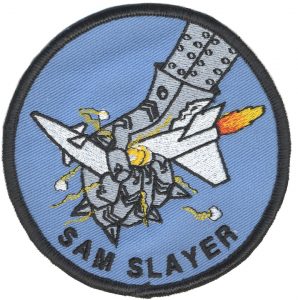12 August 1965 – The United States authorizes Operation Iron Hand air missions in Vietnam to detect and suppress enemy surface-to-air-missile sites. The early Iron Hand strikes result in many losses to the attacking American aircraft.
Operation Iron Hand was a joint United States Air Force (USAF) and United States Navy (USN) operation conducted from 1965 to 1973 during the Vietnam War. It was a type of Suppression of Enemy Air Defenses (SEAD) mission, primarily intended to suppress Soviet-supplied surface-to-air missile (SAM) systems in North Vietnam, although neutralizing radar-directed anti-aircraft artillery (AAA) was important as well. “Iron Hand” refers both to the development of the tactics and equipment, and the numerous individual “Iron Hand missions” that generally accompanied strike packages of the USAF and USN.
The Air Force Iron Hand mission was a group of four fighter/bombers that flew in ahead of the strike package to suppress SAMs. One or more would be two-seat F-100F or F-105F Wild Weasels with SAM detection and analysis electronics. Initially, the fighter/bombers had to attack SAM sites with gravity bombs. When F-105F Wild Weasels arrived, they brought the Shrike anti-radiation missile (ARM) for limited stand-off capability. Later, F-105G Wild Weasels could also be armed with the Standard ARM.
The “Iron Hand” is a metaphor to the steady hand and nerves of steel it took for pilots to fly directly at the radar-emitting anti-aircraft missile sites while the radar-seeking missiles flew down to destroy the target. The tactics employed on the Iron Hand missions were primarily designed to diminish the threat of SA-2 missiles to a bombing strike force.
Source: Wikipedia
